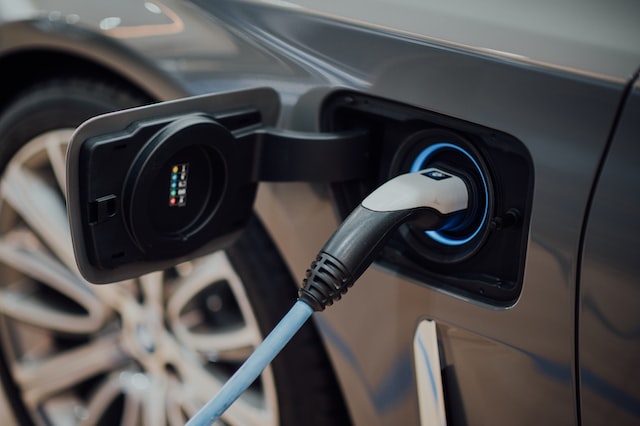All official European Union website addresses are in the europa.eu domain.
See all EU institutions and bodiesThe solutions for transitioning to sustainability involve innovative social practices, technologies and business models. Sustainability transitions are society‑wide, long-term processes built on innovation and knowledge creation. The nature of the many crises we face means that now, more than ever, we need to stick to our long-term sustainability goals and policy aims and anchor these environmental and wellbeing aims into the new priority areas like security and competitiveness.
Responding to the persistent and emerging challenges facing Europe will require transitions in the production‑consumption systems driving impacts on the environment and health. Transitions involve the emergence and upscaling of diverse innovations. There is a need for more emphasis on social innovation, behavioural change and nature-based solutions.
Multiple actors are involved in producing and implementing sustainability solutions: businesses, citizens, researchers, policymakers, social movements and interest groups. Still, governments can promote system innovation, including by supporting experimentation, correcting market failures, facilitating the spread of new ideas and approaches, and helping ensure a just transition. Governments can accelerate systemic change by helping cities to innovate and network, by reorienting financial flows towards sustainable investments and by developing relevant knowledge systems and skills.
There is no “silver bullet”, no one-size-fits-all solution, when it comes to sustainability transitions. For a sustainable mobility system, for example, the introduction of the electric motor is not enough. New electric cars would still imply substantial resource use, pollution and congestion.
The fundamental issue is not how to create a more sustainable car, but rather how to meet society’s need for point to-point mobility and for social interaction and access to goods and services: from car-sharing schemes, driverless cars and a shift to alternative modes of transport (e.g. walking, cycling) to improved spatial planning and novel communication technologies that can reduce the need for mobility (e.g. teleworking).

How to achieve sustainability amid shocks and crises?
How can Europe stay the course on sustainability amid shocks and crises? How do we anchor environment and climate priorities with other emerging ones like security, competitiveness and fairness without losing sight of the long-term sustainability objective of ‘living well within the limits of our planet’? Our new strategic foresight report calls for the need to further align European economic, social and security policies with the climate and environmental objectives.
Failing to do so would put the coherence of EU’s strategic agenda at risk, hamper implementation of crucial climate, environment, and sustainability objectives, and reduce Europe’s ability to deal with ongoing multiple shocks and crises.
The ‘Europe’s Sustainability Transitions Outlook’ report highlights the need to take a broader view on such priorities as security, competitiveness or fairness. It recognises that Europe’s socio-economic systems and wellbeing of its citizens depend crucially on a healthy and resilient natural environment, a stable climate and long-term sustainable use of resources.
Governance in times of polycrises?
Global pandemic, war, inflation and other shocks and crises have tested the European Green Deal and its ambition of building a climate-neutral and sustainable economy. Two new EEA reports discuss how Europe can respond to the pressing and complex societal challenges while moving towards long-term sustainability goals.
The EEA report ‘Transformative resilience: the key to governing Europe's sustainability transitions in the polycrisis’ explores the emerging concept of transformative resilience and how it can be useful for anticipating and responding to shocks while speeding up positive change in key areas of energy, circular economy and just transition.
The EEA report ‘Governance in complexity — Sustainability governance under highly uncertain and complex conditions’ discusses how many interconnected crises challenge traditional models of problem-solving and decision-making. The report points out that progress towards sustainability goals is still mixed.


Ensuring justice in Europe’s sustainability transition
The EEA report ‘Just sustainability transitions – From concept to practice’ addresses key questions for ensuring fairness as Europe moves ahead towards the goals of the European Green Deal. The report offers tools for policymakers to better understand and govern just transitions.
Delivering justice in Europe’s sustainability transition is multi-dimensional. It requires efforts to correct the unequal distribution of the costs of climate and environmental policies across society, as well as to alleviate the unequal burden of pollution and climate risks for places and people. At the same time, it also requires fair participation in decision-making, enabling vulnerable groups to participate and recognising and engaging with different perspectives and cultures, the EEA report argues.
What could a sustainable Europe look like in 2050?
Strategic foresight approaches are increasingly used to explore possible futures and their implications for policy and planning.
Electric vehicles become popular
Considerable progress in the uptake of electric cars and vans in the EU was made in 2022, with 21.6% of new car registrations being electric vehicles. Totalling close to two million electric car registrations in one year, up from 1,74 million in 2021. The number of electric vans on European roads also continued to grow, reaching a share of 5.5% of new registrations in 2022.
In the last year, the number of newly registered battery electric vehicles increased by 25% while the number of plug-in hybrid cars remained stable. Battery electric vehicles accounted for the vast majority of electric vans registrations in 2022.
Recently proposed legislation sets targets to cut CO2 emissions from cars by 55% and vans by 50% by 2030. It also proposes to completely cut emissions from cars and vans by 2035. A significant increase in the uptake of electric vehicles will be needed to achieve these goals.

